The word stadium comes from the Greek "stadion" (στάδιον), meaning "where people stand". The oldest known stadium is located in Greece, to the west of the Peloponnese, Greece, where the ancient Olympic Games were held since 776 BC. Dezeen's Deputy Editor-in-chief Tom Ravenscroft (the world's most influential design and architecture magazine in the world, and also won many awards for journalism and publishing) has released a list of 10 yards sports and the best sports center of the year.
1 Luzhniki Stadium, Russia, upgraded by Speech
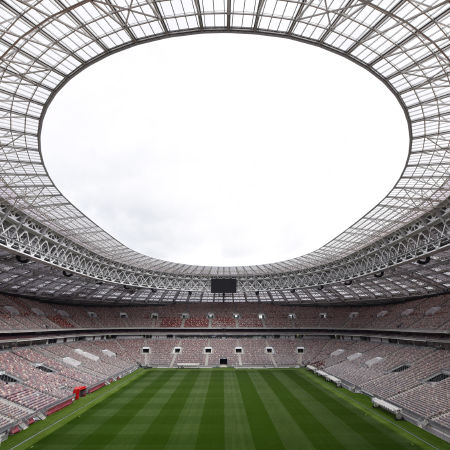
Luzhniki Stadium (Russian: Стадион «Лужники» in Moscow, Russia was the venue for the opening and final match of the FIFA World Cup 2018, which was also the focus of this year's biggest sporting event.
Admire the magnificent level of Luzhniki stadium, Russia
Is a sports stadium in Moscow, Russia. The total number of its seats is 81,000 seats, all of which are covered (upgradable). The stadium is part of the Olympic Sports Complex Luzhniki, located in the Khamovniki district of the central Moscow administrative Okrug. The name Luzhniki is from the flood meadow of the Moscow River, where the stadium was built, translated as "The Meadows ".
Not only is the iconic image of Russian sports, Luzhniki is also known as "graveyard" football, with the horror event in 1982.
On 20/10/1982 in Moscow, it is cold, full of wind and snow. Spartak Moscow next HFC Haarlem of Holland at Luzhniki in the UEFA Cup framework. The home team opened the ratio and maintained that advantage until close to the end of the match. Many of the old athletes pulled out.
However, the goal of raising the ratio to 2-0 on second-half hours caused hundreds of people to pull each other back to the celebration, resulting in a scene that overcame, shoved, according to the Guardian.
For security reasons, only one exit was used in the eastern amphitheater of the Luzhniki stadium at the time. The police did not allow the opening of other exits, despite the loud screams to the shrill.
"On the slippery stairs, the other one overthrew the other. It's like when people play Domino. To the steel railing is also the same because of the horrible pressure from the weight of hundreds. They were overspaced to death, "Chesnokov, who was lucky to survive in the incident.
In 1989, new officials confirmed the tragedy above. In some official reports, the death toll was only 66, but in recent investigations the figure was much larger, with about 340 killed. If the above figures are authenticated, this is probably the most experienced disaster in the history of football in the world.
2 Mercedes-Benz Stadium, USA, designed by HOK
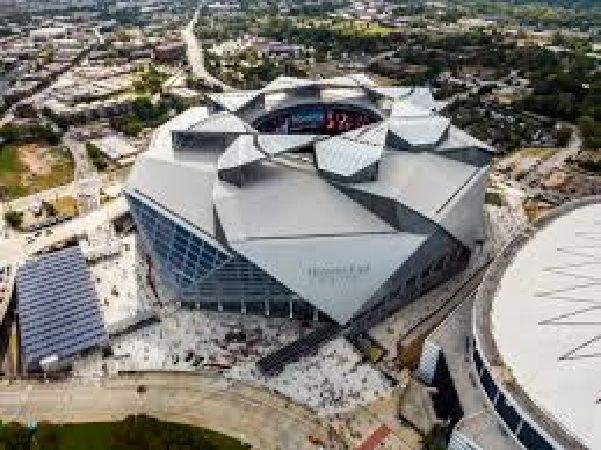
The Mercedes-Benz stadium in Atlanta was designed by HOK for the American football industry, which replaced Georgia Dome to become the home of its NFL Atlanta Atlantacons team.
Fly-Through: Mercedes-Benz Stadium
HOK, the unit responsible for consulting and designing stadium, Cho or stadium inspired by the dome of the ancient Roman temple of Pathenon. With its auto-open multi-roof canopy, the giant triangular panels overlap, which surrounds the pitch as the canopy can be opened and closed as a camera lens. This is the highlight of the stadium.
The Mercedes-Benz Stadium is a mobile stadium located in Atlanta, Georgia.
The Mercedes-Benz Stadium currently holds the record for the world's largest Halo board and is one of the few mobile rugby stadiums to have removable roofs, and one of the five NFL stadiums have mobile roofs.
The official stadium was inaugurated on Aug. 26, 2016 with a pre-season match of the Falcons pre-Arizona Cardinals, although the roof system could be inadequately collected at the time.
In addition to football matches, the Mercedes-Benz Stadium also hosts art concerts and performances. The seat can be collected around the courtyard and the digital programming phase allows for flexibility in events like this.
Some of the sustainability features are integrated into the project, which allows the building to achieve LEED Platinum certification (a certificate for green buildings) from the U.S. Green Building Council – a first professional sports playground.
The work includes public spaces and areas for urban agriculture. Rainwater is collected and reused, while solar panels on the roof and façade help create energy that serves the building.
3 Dolní Břežany Arena, Czech Republic, built by Sporadical

Built with an elementary school in Dolní Břežany, south of Prague, the Dolní Břežany Arena is clashed by reflective aluminum panels that conceal its size.
Panoramic view of the Dolní Břežany Arena
The arena is used by both schools and towns for sports activities, and serves as a cultural venue.
The hall sits on the land area of about 2.130 m2, which is designed in a round, white shape like a giant dinosaur egg.
With the unique dinosaur egg-shaped architecture of the Czech sports hall, it instantly made the impression for everyone at first glance.
4 Pyeongchang Winter Olympics Stadium, South Korea, built by DaeLim Construction

The opening ceremony of the 2018 Winter Olympics was held in Pyeongchang Olympic Stadium on Feb. 9, 2018; This US $100 million stadium is used only for the etiquette of the Olympics and the Paralympic, and will be destroyed
Opening of the 2018 Winter Olympics
The stadium accommodates 35,000 seats, and was built by DaeLim Construction. After the tournament, the stands are being removed leaving a sustainable structure, which will be built into a museum celebrating the Winter Olympics.
The stadium has a Pentagon shape, which symbolizes the five objectives of the Pyeongchang Winter Olympics: Economics, Environment, information technology, art and peace. Besides the stadium, the & ICT Cultural Gallery and the Medal Plaza are built as temporary buildings at Pyeongchang Olympic Plaza.
The 2-storey & ICT cultural gallery will feature artworks by South June Paik Media artists on the 1st floor and other contemporary artists such as Lee Jung Seob and Park Su-geun. On the second floor there are ICT areas where you can experience the advanced technology of the Olympic. Medal Plaza wide 1,267 square meters with a floor, will be used as the venue for the Olympic medal.
5 Streetmekka Viborg Build, Denmark, built by EFFEKT
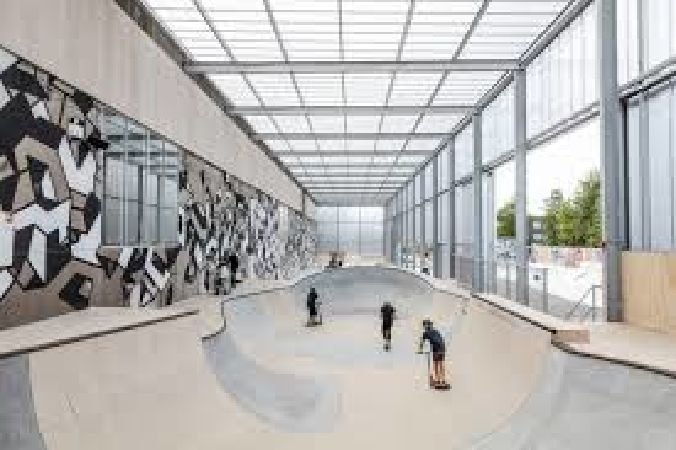
EFFEKT built a skating park and a youth center in an abandoned windmill factory in the Danish city of Viborg.
Welcome to GAME Streetmekka Viborg
This sport base is wrapped in a translucent polycarbonate skin layer. Along with a huge skating bowl, it has both basketball courts, DJ area and production factory.
Located in the city of Viborg, Denmark, the 3,170-sqm building offers a range of facilities for self-organized sports, as well as a social space for local teenagers. The building comprises a huge ice-skating bowl, basketball court, production workshop and DJ facility. The space is arranged like a street setting.
The centre offers a range of facilities for self-organised sports such as parkour, bouldering and basketball. But there are also custom areas for producing music and DJS, a cartoon studio, fabrication labs and wood and metal workshops.
6 U.S. Bank Stadium, USA, designed by HKS and Vikings Stadium Association
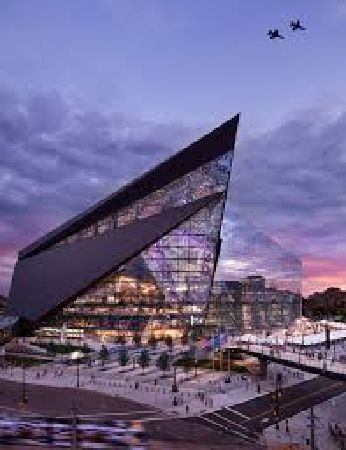
Designed by HKS and a group of architects including Hive Studio, Studio Five and Lawal Scott Erickson Architects, the U.S. Bank Stadium in Minneapolis is the new home of the Minnesota American football team Vikings.
Official Minnesota Vikings U.S. Bank Stadium Construction Time-Lapse
The stadium has a partial protruding corner and a piece of roof made of plastic film, which was noted worldwide in 2018 as the location for the Super Bowl.
Located in downtown Minneapolis, the Bank of the United States stadium is home to Minnesota Vikings, a member of the National Football League (NFL). Comprising 1.8 million square feet (167,225 square meters), the building also hosts events such as concerts, conferences and sports games in high school and university.
The HKS designed the building to reflect the city's culture, climate, and backdrop, inspired by the ice formation on nearby Saint Anthony Falls, as well as design as Viking long boats.
The roof is subjected to the harsh climate weather in the city of Minneapolis, while flooding the interior with natural daylight, feeling like it is outdoors without causing the player or fans to endure the elements. "
The slope also forms a "heat reservoir inside the Attic", which stores the heat generated by the sun and helps melt the snow on the terrace.
The stadium boasts 131 suites, nearly two dozen of which are located on the field. Six clubs are available for private events, such as meetings and weddings at the company.
Architect: HKS and Vikings Stadium Consortium (Studio Hive, Studio Five and Lawal Scott Erickson Architects)
Project Management: Hammes Company
Structural Engineer: Thornton Tomasetti
Service Engineer: M-E Engineers
General Contractor: Mortenson Construction
7 Cheomdan Badminton Court, South Korea
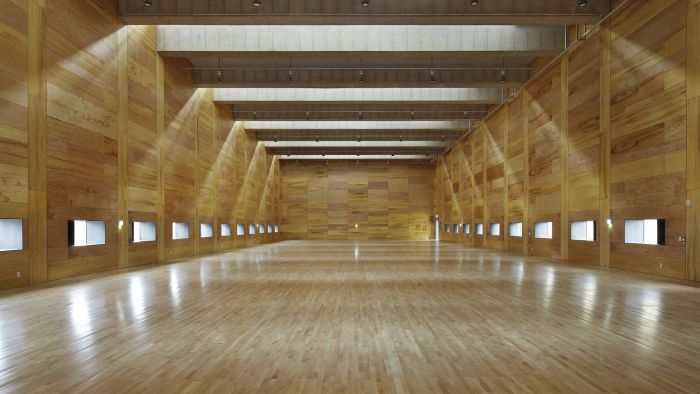
Studio JHW IROJE in Seoul built a riverside Cheomdan badminton court in the city of Gwangju city in South Korea.
Address:
760, Cheomdangangbyeon-ro, Gwangsan-gu, Gwangju, South Korea
This badminton center is made from colored concrete to fit the surrounding natural space, with a variety of atrium made of steel that provides light to the large hall.
8 Bamboo Sports Hall, Thailand, built by Chiangmai Life Architects
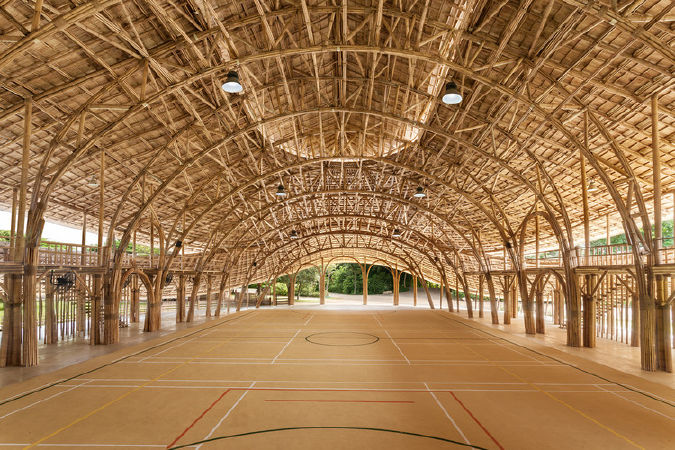
The carbon non-sport hall in Chiangmai won the Cultural and Civilian Building Award of the Year at the Dezeen inaugural ceremony.
This school in Thailand is made entirely of land and bamboo.
Chiangmai Life Architects designed for international School Panyaden combines modern design, 21st century engineering and a natural-bamboo material.
The design is based on a lotus flower because of Panyaden International School in Thailand and uses Buddhist teachings to transmit values into the curriculum and teach the fundamental mechanisms of the human mind.
Built by Chiangmai Life Architects, a bamboo construction expert, the school's sports house will be used to play basketball, volleyball, badminton and futsal.
Address: 218 Moo 2, Namprae, ตําบล หางดง เชียงใหม่ 50230, Thailand
9 Golf Exécutif Montréal, Canada, by Architecture49
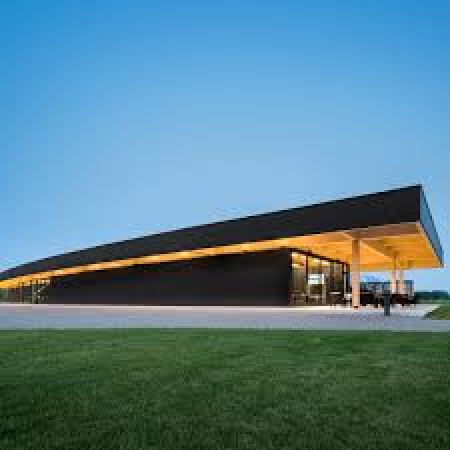
This minimalist club is located in a golf course in Montréal, it is covered by a large wooden roof to assist the player in bad weather.
Close-up Golf Exécutif Montréal
The roof of the building is constructed in a curved shape that is twice the house with a harmonious proportion. There is also a lounge with a bar, a professional shop, an administrative office and a reception hall.
ARCHITECTURE49's local office has designed the club for the Exécutif Montreal Golf course on the island of Nun, a "green oasis" located in the city's Saint Lawrence River.
With an area of 855 square meters, the building has a simple curved shape.
To successfully build the architecture of the roof requires precise design work to ensure the harmonization between the outer and inner proportions of the structure, "Architecture49 said in a project statement. "
10 Atlantic Pavilion, Portugal, built by Valdemar Coutinho Arquitectos
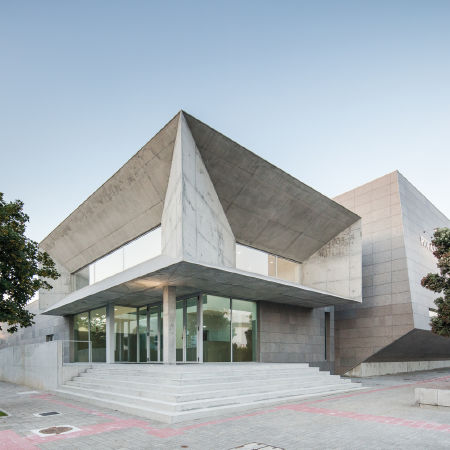
The Bruralist-style sports house Pedro Barbosa, called the Atlantic Pavilion, was designed for use by both the school and the community of Viana do Castelo.
Due to the need for strong financial control and a thought-up of building infrastructure for easy access maintenance in the future, the global cost of work was limited to a pre-set value by the Viana do Castelo Council.
The sport Hall is 650 square meters wide, with an angled concrete entrance to bring the daylight into the Annex Hall.

